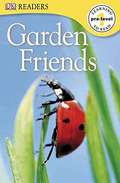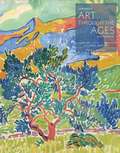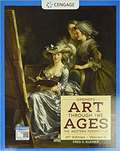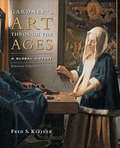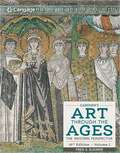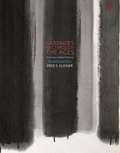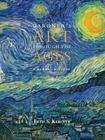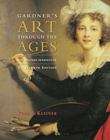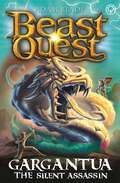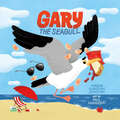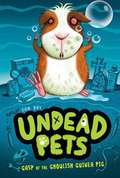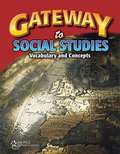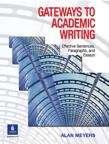- Table View
- List View
Ganiti Jadu Bhag 1 class 1 - Goa Board: गणिती जादू भाग 1 इयत्ता पहिली - गोवा बोर्ड
by Directorate of Education Porvorim GoaThe textbook Ganiti Jadu Bhag 1 Class 1 is published Goa Board. It is Permitted and support by: “National Council of Educational Research and Training New Delhi”. The book plays an important role in the educational process as it provides the basis for activities and evaluation strategies in the academic framework. The book is printed in two languages English and Konkani Marathi. It contains match problems and logical thinking for children.
Ganiti Jadu Bhag 2 Class 1 - Goa Board: गणिती जादू भाग 2 इयत्ता पहिली - गोवा बोर्ड
by Directorate of Education Porvorim GoaThe textbook Ganiti Jadu Bhag 2 Class 1 is published Goa Board. It is Permitted and support by: “National Council of Educational Research and Training New Delhi”. The book plays an important role in the educational process as it provides the basis for activities and evaluation strategies in the academic framework. The book is printed in two languages English and Konkani Marathi. It contains match problems and logical thinking for children.
Ganiti Jadu Bhag 2 Class 4 - Goa Board: गणिती जादू भाग 2 इयत्ता चौथी - गोवा बोर्ड
by Directorate of Education Porvorim GoaThe textbook Ganiti Jadu Bhag 2 Class 4 is published Goa Board. It is Permitted and support by: “National Council of Educational Research and Training New Delhi”. The book plays an important role in the educational process as it provides the basis for activities and evaluation strategies in the academic framework. The book is printed in two languages English and Konkani Marathi. It contains match problems and logical thinking for children.
Ganiti Jadu Bhag 2 class 3 - Goa Board: गणिती जादू भाग 2 इयत्ता तिसरी - गोवा बोर्ड
by Directorate of Education Porvorim GoaThe textbook Ganiti Jadu Bhag 2 Class 3 is published Goa Board. It is Permitted and support by: “National Council of Educational Research and Training New Delhi”. The book plays an important role in the educational process as it provides the basis for activities and evaluation strategies in the academic framework. The book is printed in two languages English and Konkani Marathi. It contains match problems and logical thinking for children.
Garama, Garden of the Sahara (Into Reading, Level V #82)
by Rebecca Kereopa Marianne PosadasNIMAC-sourced textbook
Garama: El jardín del Sahara (¡Arriba la Lectura!, Level W #82)
by Rebecca Kereopa Marianne PosadasCuando el recurso más precioso del desierto comienza a escasear, un antiguo oasis en el severo paisaje del Sahara se enfrenta a decisiones difíciles. ¿Habrá futuro para la floreciente ciudad de Garama? ¿O la ignorancia y la avaricia podrán más que la sabiduría, dejando en ruinas los siglos de conocimiento y comprensión? NIMAC-sourced textbook
Garbo's Grudge (Fountas & Pinnell Classroom, Guided Reading)
by Judy Love Pat McCannNIMAC-sourced textbook. … Like Cats and Dogs Can a cat and a dog in the same household get along? Garbo doesn't think so. And she should know.
Garden Friends
by Dk BooksNIMAC-sourced textbook <p><p>Children just learning to read will love exploring the garden in this book. Meet creepy crawly friends that live in the dirt. Who would’ve guessed there were so many different critters surviving down there?
Gardner's Art Through The Ages: A Global History
by Fred S. KleinerGARDNER'S ART THROUGH THE AGES: A GLOBAL HISTORY provides you with a comprehensive, beautifully illustrated tour of the world's great artistic traditions! Easy to read and understand, the 15th edition of the most widely read art history book in the English language continues to evolve, providing a rich cultural backdrop for each of the covered periods and geographical locations, and incorporating new artists and art forms -- all reproduced according to the highest standards of clarity and color fidelity. A complete online learning environment, including all images and an eBook, also is available. The unique Scale feature will help you better visualize the actual size of the artworks shown in the book. "The Big Picture" overviews at the end of every chapter summarize the chapter's important concepts.
Gardner's Art Through The Ages: The Western Perspective, Volume II
by Helen Gardner Fred S. KleinerAuthor and award-winning scholar-professor Fred Kleiner continues to set the standard for art history textbooks, combining impeccable and authoritative scholarship with an engaging approach that discusses the most significant artworks and monuments in their full historical and cultural contexts. GARDNER'S ART THROUGH THE AGES: THE WESTERN PERSPECTIVE, VOLUME II includes nearly 100 new images, new pedagogical box features, images that have been upgraded for clarity and color-fidelity, revised and improved maps and architectural reconstructions, and more. Over 40 reviewers -- both generalists and specialists -- contributed to the accuracy and readability of this edition. A unique scale feature will help students better visualize the actual size of the artworks shown in the book. Within each chapter, the ""Framing the Era"" overviews, timeline, extended captions, and the chapter summary section titled ""The Big Picture"" will help students review for exams.
Gardner's Art Through the Ages: A Global History
by Fred S. KleinerGARDNER'S ART THROUGH THE AGES: A GLOBAL HISTORY provides you with a comprehensive, beautifully illustrated tour of the world's great artistic traditions! Easy to read and understand, the 15th edition of the most widely read art history book in the English language continues to evolve, providing a rich cultural backdrop for each of the covered periods and geographical locations, and incorporating new artists and art forms -- all reproduced according to the highest standards of clarity and color fidelity. A complete online learning environment, including all images and an eBook, also is available. The unique Scale feature will help you better visualize the actual size of the artworks shown in the book. "The Big Picture" overviews at the end of every chapter summarize the chapter's important concepts.
Gardner's Art Through the Ages: A Global History (Enhanced 13th Edition)
by Fred S. KleinerThe 13TH ENHANCED EDITION of GARDNER'S ART THROUGH THE AGES: A GLOBAL HISTORY takes this brilliant bestseller to new heights in addressing the challenges of today's classroom. The art of western Europe, which was the basis for the original Gardner History, is now interspersed with chapters on the art and architecture of South and Southeast Asia, China and Korea, Japan, Oceania, Africa, the Islamic world, and Native American art.
Gardner's Art Through the Ages: The Western Perspective
by Fred S. KleinerExperience the wonders of human creativity in GARDNER'S ART THROUGH THE AGES: THE WESTERN PERSPECTIVE, VOLUME I, 16th Edition! A grand tour of the world's most celebrated works of Western Civilization from the Stone Age to the modern era, this introductory text has been a classroom favorite for 85 years. Every chapter includes rich and compelling discussions of pivotal art works, periods and geographies in art history, as well as new artists and art forms. The bold illustrations on the pages look almost as good as the real thing, especially when you use the unique Scale feature to imagine a work's stature from the artist's point of view. And to keep your course success in focus, the text offers Quick Review Captions and Big Picture Overviews, as well as an optional ebook that enables you to zoom in on fine details of paintings, sculptures, and priceless art forms of all kinds.
Gardner's Art through the Ages: A Concise Global History
by Fred S. KleinerGARDNER'S ART THROUGH THE AGES: A CONCISE GLOBAL HISTORY, 4th Edition provides you with a comprehensive, beautifully illustrated tour of the world's great artistic traditions, and, with MindTap, all of the online study tools you need to excel in your art history course! Easy to read and understand, the fourth edition includes new artists and provides a rich cultural backdrop for each of the covered periods and geographical locations.
Gardner's Art through the Ages: A Global History
by Fred S. KleinerNotable to the 13th edition of this celebrated textbook is the upgrading of a large percentage of the images around which the text is based. Professors accustomed to the 12th edition will be relieved to learn that the content and its organization have not been altered. The volume includes online access to a site where students can find flashcards, visual compare and contrast examples, links to Google earth coordinates, interactive maps, video clips, and practice tips, among other study aids. The art of western Europe, which was the basis for the original Gardner History, is now interspersed with chapters on the art and architecture of South and Southeast Asia, China and Korea, Japan, Oceania, Africa, the Islamic world, and Native American art. Many maps and inset boxes, as well as an accompanying fold-out timeline are included. Earlier editions are cited in Resources for College Libraries. Annotation ©2008 Book News, Inc., Portland, OR (booknews.com)
Gardner's Art through the Ages: The Western Perspective (13th edition)
by Fred S. KleinerAs fascinating as a real visit to the world's famous museums and architectural sites, GARDNER'S ART THROUGH THE AGES: THE WESTERN PERSPECTIVE gives you a comprehensive, beautifully illustrated tour of the world's great artistic traditions--plus all the study tools you need to excel in your art history course! Easy to read and understand, this 13th Edition of the most widely read history of art book in the English language is the only textbook that includes a unique "scale" feature.
Gargantua the Silent Assassin: Series 27 Book 4 (Beast Quest #1053)
by Adam BladeFree the Beasts. Live the Adventure.Battle Beasts and fight Evil with Tom and Elenna in the bestselling adventure series for boys and girls aged 7 and up!Tom and Elenna's latest Beast Quest has taken a sinister turn. Gargantua the Silent Assassin is a monstrous snake-Beast with metal scales that can withstand any weapon. How can our heroes hope to defeat this enemy?There are FOUR thrilling adventures to collect in The Ghost of Karadin series - don't miss out! Gorog the Fiery Fiend; Devora the Death Fish; Raptex the Sky Hunter and Gargantua the Silent Assassin.If you like Beast Quest, check out Adam Blade's other series: Team Hero, Sea Quest, Beast Quest: New Blood and Space Wars.
Garrett Morgan: The Man Behind the Mask (Fountas & Pinnell Classroom, Guided Reading)
by Harold WilliamsNIMAC-sourced textbook. In a tunnel deep under Lake Erie, a massive explosion had trapped a group of workers. Unless rescue came soon, the men were sure to die. Their only hope for survival was if Garrett Morgan arrived with his remarkable new invention.
Gary the Seagull
by B.A. JohnstonA hungry seagull will do anything for a lunch at the beach in this delightful read-aloud children’s book from comedic musician B.A. Johnston.It's a hot summer day and Gary is hungry. The beach is packed with people...and packed with people’s lunches. Though he’s been known to eat everything from minnows to garbage, it’s beach lunches Gary loves most of all. With his patented seagull cunning, Gary takes increasingly ridiculous measures to trick a young boy into sharing his lunch. Will the boy hand over his ketchup chips and watermelon?This uproarious read-aloud from beloved Ontario-based songwriter and entertainer, better known by his stage name, B.A. Johnston, will have parents hugging their beach coolers a little tighter and kids shouting “SHOO, BIRD! SHOO!” Halifax-based illustrator-cartoonist Paul Hammond provides bright and bold illustrations and hand-lettered embellishments for a salty good read.Praise for Gary the Seagull“An easy read that would be enjoyable for most kids. There are some bigger words that could make it useful for grade school-age children who are practicing reading. The bright and bold cartoon style illustrations depict all the colors that one would see at the beach. The wider beach scenes also show a diversity in the people who are there.” —Canadian Review of Materials
Gasp of the Ghoulish Guinea Pig #7
by Simon Cooper Sam HayJoe's latest visitor needs help fast--to save his litter mates from the ghoulish grave! Flash, a guinea pig, needs Joe to guard his family from an escaped snake! Will the Protector of Undead Pets prevail, or will Flash have company for his final crossing?
Gateway Outposts: A Collection of Literature with Reading Techniques
by Olive Stafford Niles Ruth S. Cohen L. Jane ChristensenGateway to Social Studies: Vocabulary and Concepts
by Stephen J. Thornton Bárbara C. Cruz320 page student book designed for English learners, striving readers, and special education students. It introduces and reinforces social studies terms and skills. Includes Geography, World History, American History, and Civics and Government.
Gateways to Academic Writing: Effective Sentences, Paragraphs, and Essays
by Alan MeyersGateways to Academic Writing: Effective Sentences, Paragraphs, and Essays, by Alan Meyers, provides a fully integrated program of writing instruction for high-intermediate to advanced students of English. The book's four units give students the tools they need to improve their academic writing. Unit I introduces the writing process, from exploring ideas, organizing, and drafting to revising, editing, and proofreading. Unit II examines the ten modes of writing, including narration, all forms of exposition, persuasion, and summary and response. Unit III presents key terminology, sentence structures, and verb tenses and forms. Unit IV gives students extensive editing practice, including Editing for Mastery exercises.

